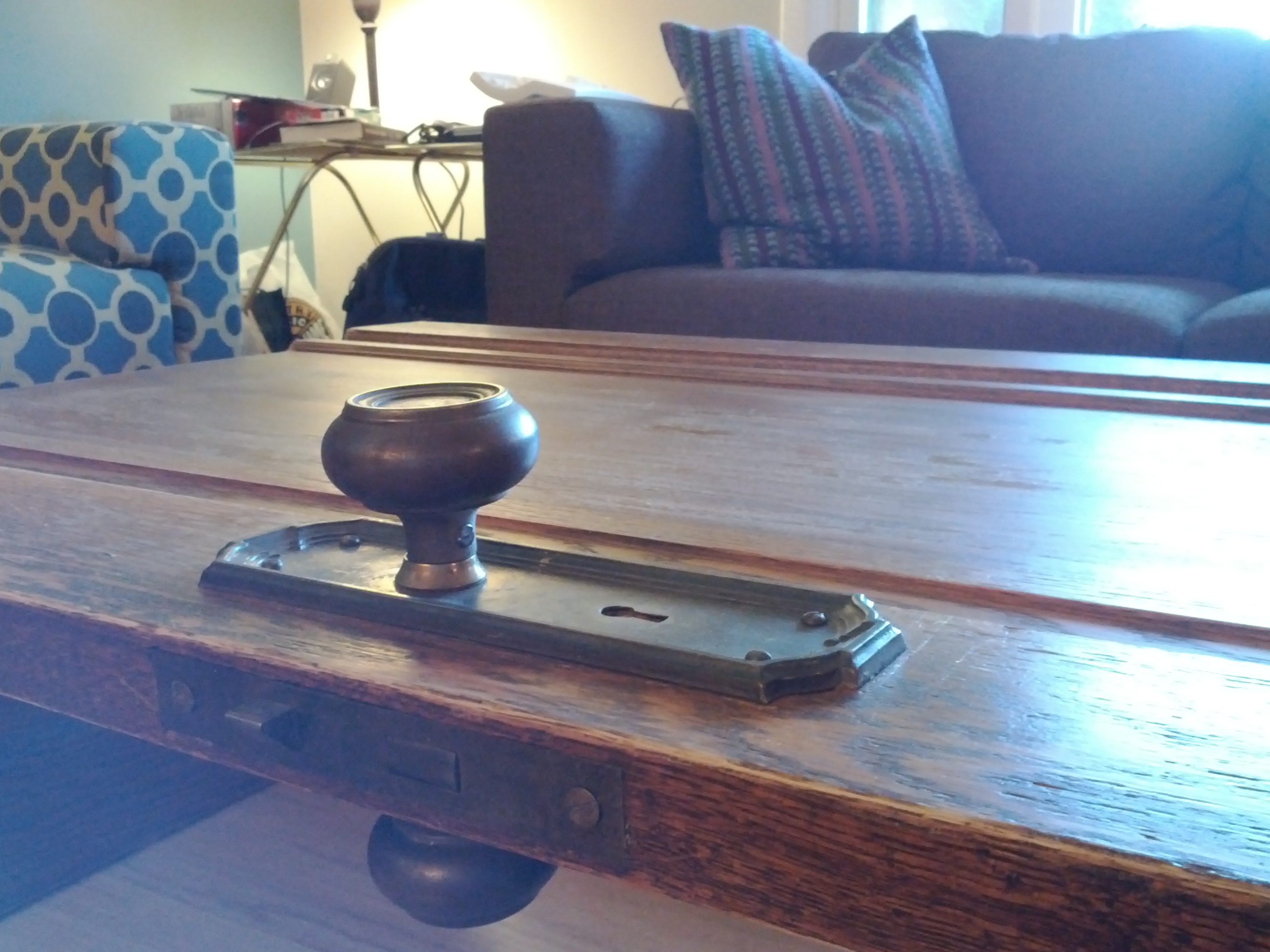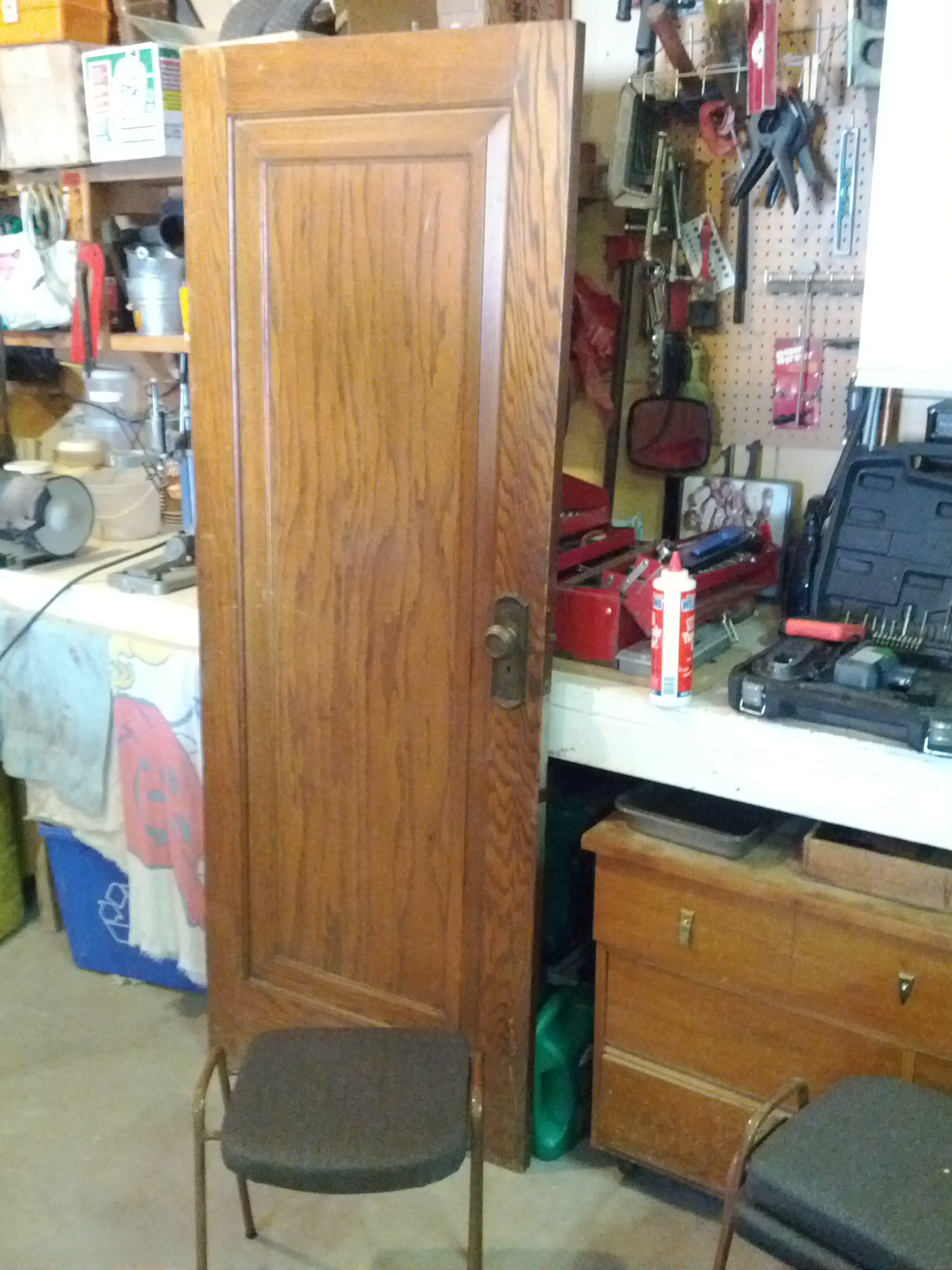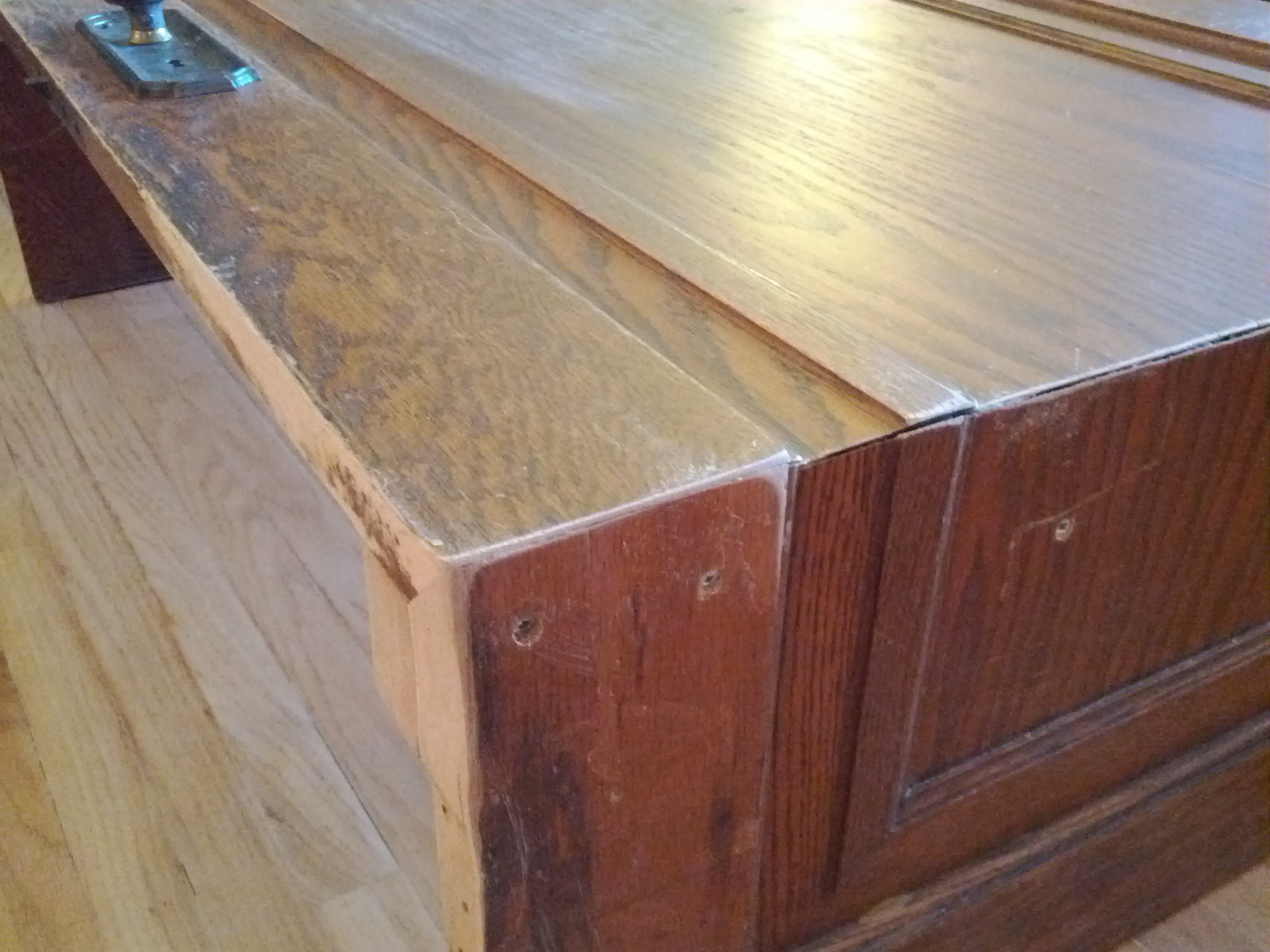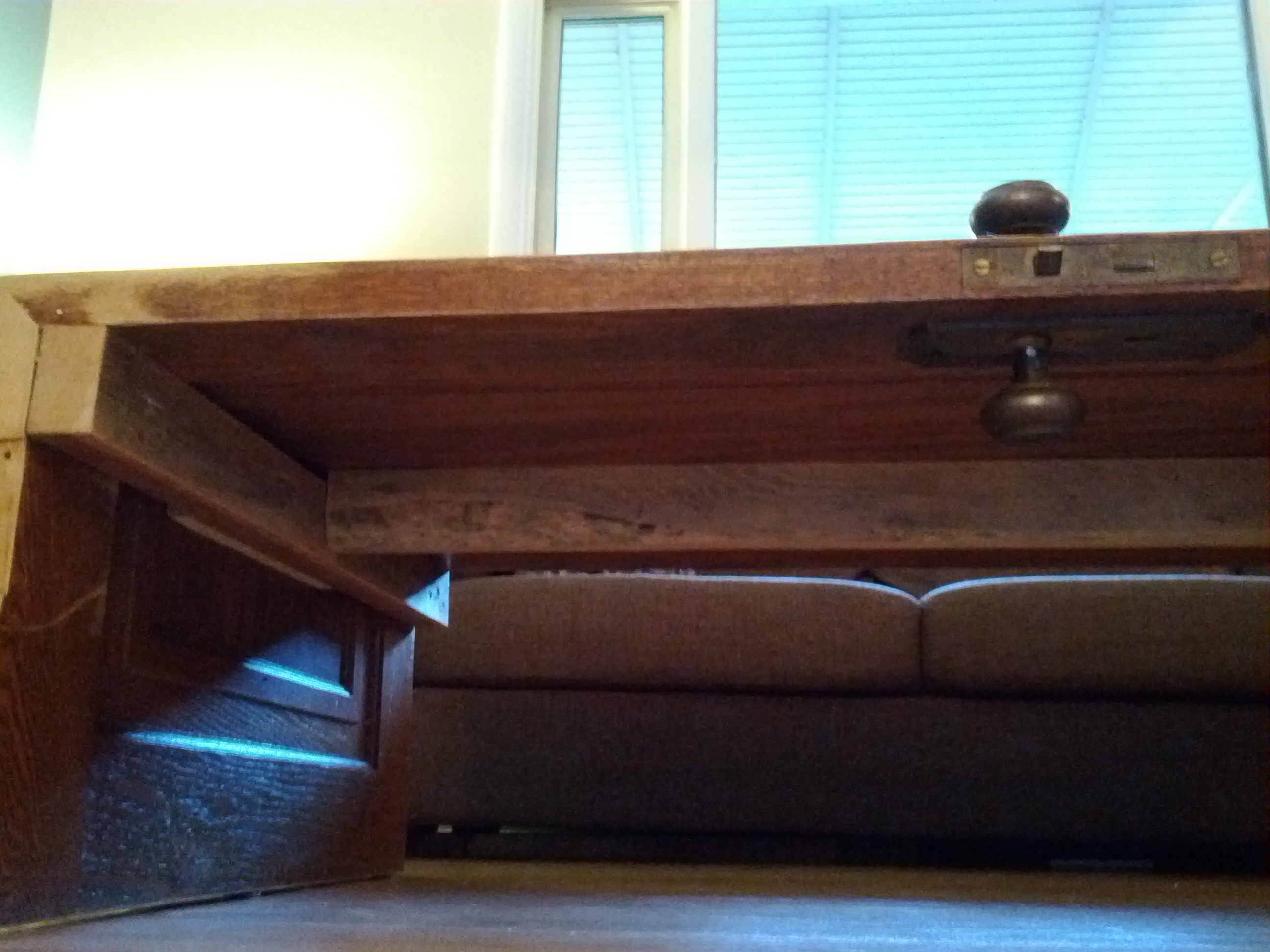07.28
Last weekend my wife and I made ourselves made a new coffee table (well, more like we helped my dad make it for us). As you can see, our table comes with a door knob, a relic from its past life. A few weeks ago we stumbled upon another’s efforts to repurpose a door into a table and decided to try for ourselves.
My father-in-law already had some old doors sitting in his basement, but they were single panel doors. In order to get a cleaner look I decided that we should miter the cut and make the table look like it had just been folded over.
Since we have a rather long couch, our original idea was to use two doors: one for the table top and one side, the other for a shelf and the other side piece. However, after measuring to see how much longer this would make the table, we realized that we would only gain about 15 cm as we would still be cutting off the top and bottom to get us our folded look. Once we added in the fact that the second door was in much worse shape and was actually slightly narrower, we decided the extra effort wasn’t worth it so we ended up just using the one door.
At this point, we were still thinking we wanted a shelf and possibly also feet. One advantage of using a single panel door over a multi-panel door is that the height is much more flexible. We aimed to have the height of the table be slightly shorter than the couch seat height to allow for the addition of feet, but after a minor measurement error, we ended up with the table being almost the exact height of the couch. This turned out to be a blessing as, once we had the table assembled, we realized that we liked the looks of the table without feet or a shelf.
The one down side to using a single panel door is that the centre panel is not very strong, but it makes up the majority of the table top. In order to help solidify the top in case someone decides to sit on it or something, we added a few 2×4 support pieces to the underside of the table.
So far we have decided not to add a shelf as the look of the table is currently quite clean and has enough room for us to store some baskets full of board games. We still have some finishing work to do (fill in some of the joints and screw holes with wood filler, re-stain the heavily sanded corners and support beams, etc) but for now it is in service and we are really enjoying it.





